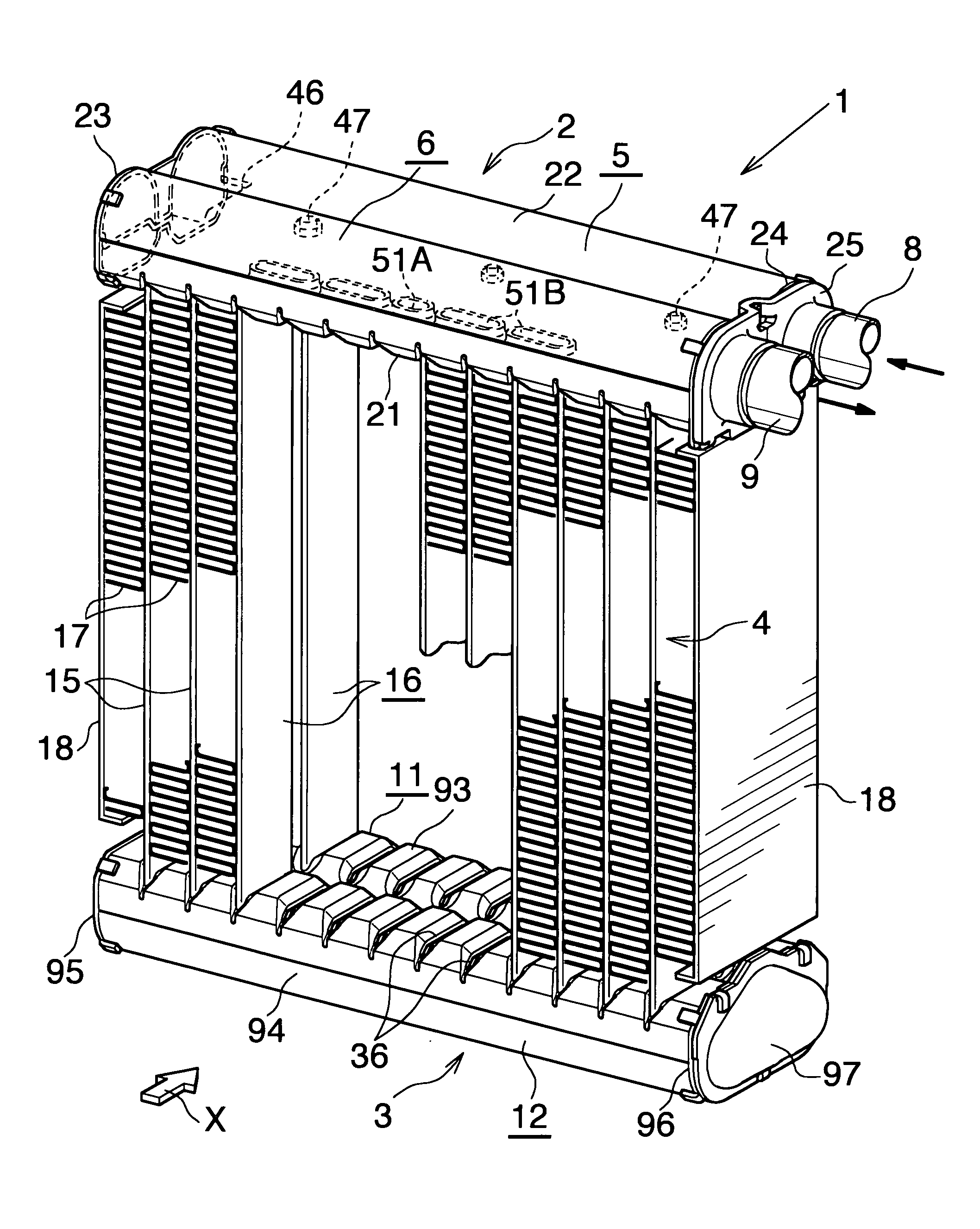Heat exchanger
- Summary
- Abstract
- Description
- Claims
- Application Information
AI Technical Summary
Benefits of technology
Problems solved by technology
Method used
Image
Examples
Embodiment Construction
[0048]An embodiment of the present invention will next be described in detail with reference to the drawings. The embodiment is of a heat exchanger according to the present invention that is applied to an evaporator of a car air conditioner using a chlorofluorocarbon-based refrigerant.
[0049]In the following description, the term “aluminum” includes aluminum alloys in addition to pure aluminum.
[0050]Further, the same reference numerals are used throughout the drawings to refer to similar parts or elements, and their repeated descriptions are omitted.
[0051]FIGS. 1 and 2 show the overall configuration of an evaporator, and FIGS. 3 to 16 show the configuration of a main portion of the evaporator.
[0052]As shown in FIGS. 1 to 3, the evaporator (1) is configured such that a heat exchange core section (4) is provided between a refrigerant inlet / outlet header tank (2) made of aluminum and a refrigerant turn header tank (3) made of aluminum, which are separated from each other in the vertical...
PUM
 Login to View More
Login to View More Abstract
Description
Claims
Application Information
 Login to View More
Login to View More - R&D
- Intellectual Property
- Life Sciences
- Materials
- Tech Scout
- Unparalleled Data Quality
- Higher Quality Content
- 60% Fewer Hallucinations
Browse by: Latest US Patents, China's latest patents, Technical Efficacy Thesaurus, Application Domain, Technology Topic, Popular Technical Reports.
© 2025 PatSnap. All rights reserved.Legal|Privacy policy|Modern Slavery Act Transparency Statement|Sitemap|About US| Contact US: help@patsnap.com



